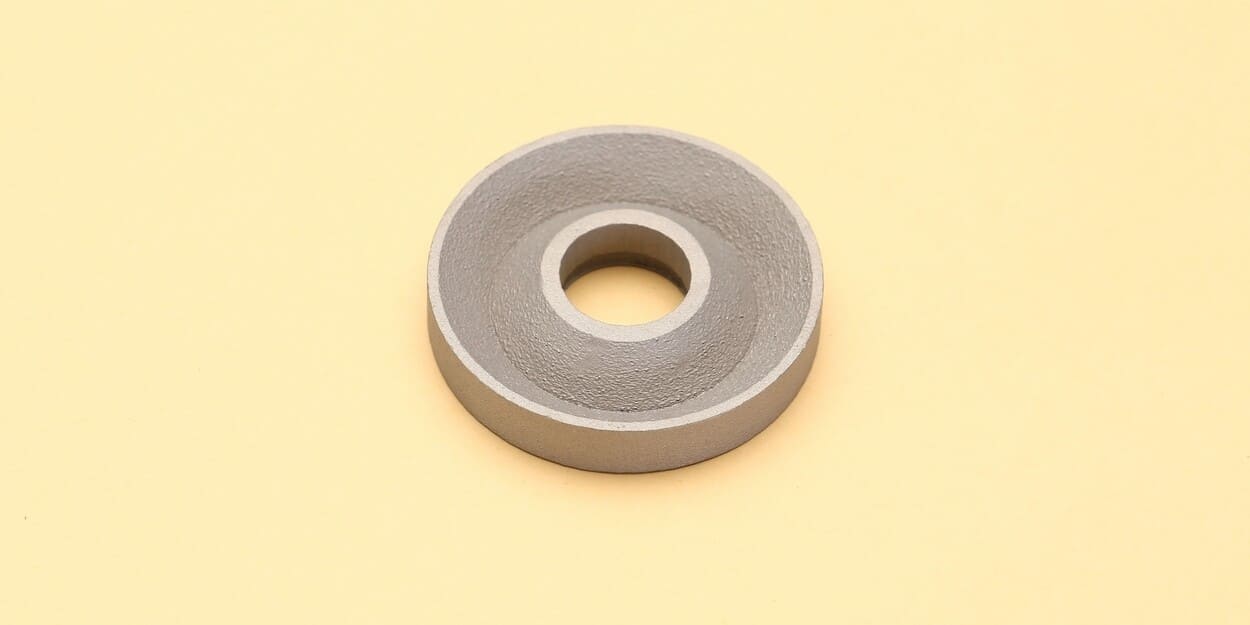Material Selection for SLM
Choosing the right material lays the foundation for success in SLM 3D printing. Hi3DP offers a wide range of alloys—stainless steels (316L), titanium (Ti‑6Al‑4V), Inconel 718, aluminum (AlSi10Mg, A-6061), and even maraging steel—each with unique properties:
Mechanical Performance
316L stainless steel: excellent corrosion resistance and good strength.
Ti‑6Al‑4V: lightweight, biocompatible, high strength‑to‑weight ratio.
Inconel 718: outstanding high‑temperature strength for aerospace.
Thermal & Corrosion Resistance
Aluminum alloys for lightweight heat sinks or housings.
Specialty superalloys for extreme environments.
Discuss your application requirements with Hi3DP’s materials experts to select the best metal powder or composite powder blend for your project.
Wall Thickness & Minimum Feature Size
One core “3D printing rule of thumb” is balancing minimal feature dimensions with part integrity:
Minimum Wall Thickness
Metals: ≥0.8 mm recommended to avoid lack‑of‑fusion and warping.
Fine Features
Pins, ribs, and text: design ≥0.5 mm width/height, with embossed/debossed text at ≥0.8 mm stroke.
Holes: maintain ≥1.2 mm diameter to ensure reliable powder clearance.
Tolerance Planning
Allow ±0.1–0.2 mm for features under 10 mm and ±0.2–0.3 mm for larger dimensions.
Compensate for shrinkage by scaling your CAD model accordingly.
Following these SLM 3D printing design guidelines helps prevent weak walls and fuzzy details, ensuring crisp, functional parts right off the build plate.
Overhangs, Supports, and Self-Supporting Geometry
SLM builds layer by layer, so overhangs beyond a certain angle require supports to anchor material and dissipate heat:
Critical Overhang Angle
Features angled more than 45° from horizontal typically need supports in 3D printed metal parts.
Support Strategies
Place supports on non‑critical faces to minimize post‑processing marks.
Use tree‑like or lattice supports to reduce contact area and ease removal.
Self‑Supporting Design
Wherever possible, redesign steep overhangs into self‑supporting slopes (≥45°) or add features like chamfers and fillets to eliminate the need for supports.
Minimizing support volume accelerates build times, reduces material consumption, and lowers post‑processing labor—key cost drivers in metal 3D printing.
Build Orientation & Part Placement
How you orient your parts in the SLM build chamber directly impacts surface finish, mechanical behavior, and build efficiency:
Surface Quality vs. Build Time
Vertical surfaces aligned with the recoating direction yield a smoother finish but increase build height (and time).
Angled surfaces produce a “stair‑step” effect; adjust the angle or orientation to balance quality and speed.
Thermal Stress & Distortion
Tall, slender features concentrate heat; orient them to maximize heat dissipation through the build plate.
Distribute multiple parts evenly to avoid hot spots and powder bed deformation.
Batch Efficiency
Nest similar parts in a single build—and maintain at least 3 mm between geometries—to optimize powder flow and recoating reliability.
Designing for Internal Features & Lattices
One of the standout advantages of SLM 3D printing is creating internal channels, conformal cooling, and lattice structures without tooling:
Internal Channels
Minimum cross‑section ≥1.5 mm ensures trapped powder can be removed through vents.
Add drain holes or flow paths at the lowest points to facilitate cleaning.
Lattice & Topology Optimization
Replace solid volumes with gyroid or cubic lattices for high stiffness‑to‑weight ratios.
Use topology optimization tools to apply material only where needed.
Powder Removal
Plan venting and access holes; avoid completely enclosed cavities that trap unmelted powder.
Surface Finish & Post-Processing Considerations
As‑built SLM parts exhibit typical surface roughness (Ra 5–15 µm) and may contain residual stresses:
Stress Relief & Heat Treatment
Perform stress relief (450–650 °C for steels, 650–800 °C for titanium alloys) to reduce distortion and improve ductility.
For critical aerospace or medical parts, consider Hot Isostatic Pressing (HIP) to eliminate internal porosity.
Surface Enhancement
Machining: finish sealing surfaces, threads, and precision features.
Shot Peening: enhances fatigue life by inducing compressive surface stresses.
Polishing or Bead Blasting: improve surface aesthetics and reduce roughness.
Hi3DP offers turnkey post‑processing packages to deliver ready‑to‑use 3D printed metal parts—just specify your surface and mechanical requirements.
Tolerances, Threads, and Fits
For reliable assembly and mechanical performance, plan your tolerances and integrate machining allowances where necessary:
General Tolerances
≤10 mm features: ±0.1 mm; 10–50 mm: ±0.2 mm; >50 mm: ±0.3 mm.
Threads & Fasteners
Print coarse threads only for non‑critical applications; add machining allowance (+0.5 mm) for tapped holes.
Consider threaded inserts or conformal screw inserts for repeated assembly cycles.
Interference & Clearance Fits
Use clearance fits (H7/g6) for press‑fit parts, and consult Hi3DP for precision machining steps to achieve tight fits.
Assembly Features & Part Consolidation
Reduce assembly steps and potential leak paths by consolidating multiple components into a single SLM build:
Integrated Locators & Snap‑Fits
Design dowel pins, snap‑fit hooks, or dovetails directly into the metal print to simplify alignment and assembly.
Complex Assemblies in One Build
Combine housing, brackets, and articulating joints to eliminate welding or bolting operations.
Balance complexity with risk—overly elaborate consolidations can introduce build failures.
Fluid & Cable Management
Embed channels for cooling fluids or wiring, ensuring minimum cross‑sections for purgeability.
Hi3DP’s design-for-additive-manufacturing (DfAM) consulting helps you identify the best consolidation opportunities for cost and performance gains.
FAQs
Q: What is the typical lead time for SLM 3D printing?
A: Standard lead times at Hi3DP's suppliers range from 5–10 business days, depending on volume, material, and post‑processing requirements.
Q: Can Hi3DP print flexible or nylon‑filled metal parts?
A: Yes! We offer SLM 3D printed nylon‑metal composites and specialized polymer infills—talk to our team about your flexibility needs.
Q: How do I ensure powder residues are fully removed from internal channels?
A: Design venting holes (≥1.5 mm) at low points and specify ultrasonic or air‑blast cleaning during post‑processing.
Q: Do I need to provide a particular file format?
A: We accept mostly 3D file formats, such as We support .STL .STP .STEP .GLTF .OBJ .FBX .DAE .3MF .BREP .GCODE formats. Ensure your model is watertight with normals oriented outward.
Q: How do I get an instant quote?
A: Upload your CAD file, select material and finish, and receive a quote in seconds—no hidden fees!














